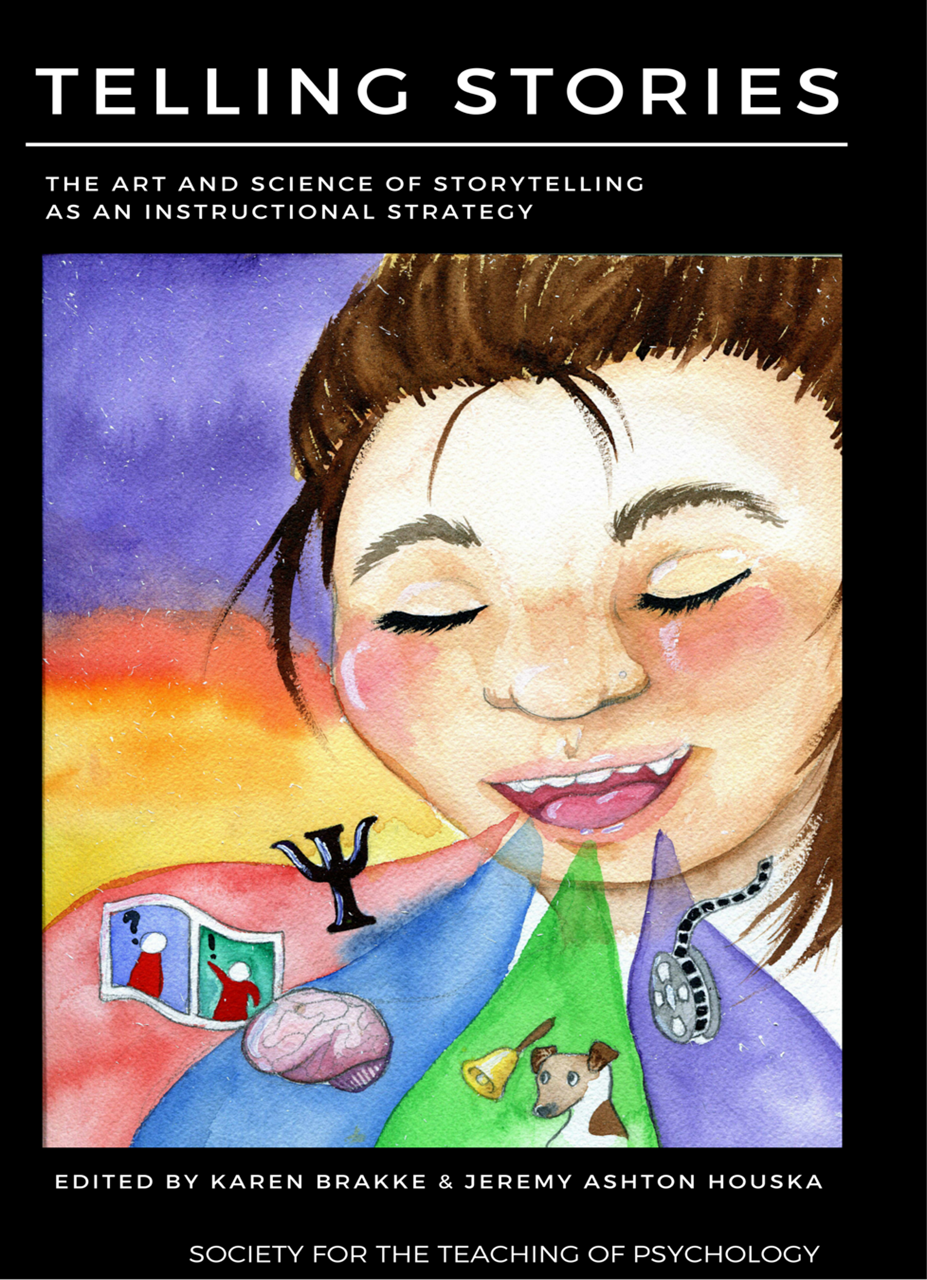| Table of Contents |
|
|
|
| Foreword |
5 |
| R. Eric Landrum |
|
| Introduction |
|
| The Power of Story as an Instructional Strategy |
7 |
| Karen Brakke, Jeremy Ashton Houska, Xin Zhao, Sherry Lynn Kinslow, Amanda Clinton, and Brad Campbell |
|
| The Use of Story among Teachers of Psychology |
14 |
| Jeremy Ashton Houska, Karen Brakke, Sherry Lynn Kinslow, Xin Zhao, Brad Campbell, and Amanda Clinton |
|
| Section 1: Comprehension of Stories |
|
| Weaving Yarns into Good Psychological Science Education |
27 |
| Richard L. Miller and William J. Wozniak |
|
| Remembering Stories: Constructing Elaborate Situation Models in Memory |
40 |
| David E. Copeland, Kathleen G. Larson, and Michael T. Palena |
|
| Encouraging Comprehension: Insights from Research on Reading Stories |
49 |
| Jeffrey E. Foy |
|
| Section 2: Using Students’ Autobiographical Stories |
|
| The Story of Your Life: Personal Mission Statements as Guiding Narratives for Young Adults |
60 |
| H. Russell Searight and Barbara K. Searight |
|
| Lives-as-Text: Assigning Self-Narrative to Inform Learning |
69 |
| Joyce Fields, Karen C. Thompson, & Shirley Huisman |
|
| Telling Research Stories: Formulating Coherent Narratives in Research Intensive Courses |
79 |
| Jeremy Ashton Houska and Meredith Drew |
|
| Family Stories as Springboards for Learning |
87 |
| Robyn Fivush and Natalie Merrill |
|
| Section 3: Incorporating Story in the Classroom |
|
| Antsy Students Impatient to Leave Class and Faculty Captive in NPR Driveway Moments: Enhancing Science Classes with Personal Stories |
98 |
| Kevin H. Grobman |
|
| Phenomenology of the Story in Dialogue: Narrative as Pedagogy in Psychology |
116 |
| Matthew Draper, David Polizzi, Daniel Sturtevant, and James McGraw |
|
| Fairy Tales and Murder Mysteries: Using Stories in Statistics to Increase Learning and Understanding |
127 |
| Jana Hackathorn and Brien K. Ashdown |
|
| Holistic Learning to Holistic Help: Use of Case-Based Education in Promoting Psychological Literacy in Clinical Psychological Education |
136 |
| Gerald E. Nissley, Jr. and Michael Atwood |
|
| Section 4: Interdisciplinary Perspectives on Story |
|
| The Play’s the Thing! Theatre and Narrative Transportation in Education |
145 |
| Sally Bailey |
|
| The Pedagogical Strategies of Implementing Story from a Feminist Perspective |
164 |
| Jennifer J. Mootz and Debra Mollen |
|
| Storytelling through Pictures and Words: The Use of Comics for Teaching |
173 |
| Kris Gunawan and David E. Copeland |
|
| Author Biographies |
182 |
Feedback
Feedback regarding the editorial content of this book or any of its essays should be directed toward the individual authors or the book's editors. They (authors and editors) are solely responsible for the substance of the text. Feedback regarding technical matters of formatting or accessibility of this text via the online environment of the Internet should be directed to the Internet Editor. If you have any complaints or difficulties in accessing these materials, be sure to provide as detailed a description of your problem(s) as you can; you should include information about the browser you are using and the type of computer you are using.
Copyright and Other Legal Notices
The individual essays and chapters contained within this collection are Copyright © 2015 by their respective authors. This collection of essays and chapters as a compendium is Copyright © 2015 Society for the Teaching of Psychology. You may print multiple copies of these materials for your own personal use, including use in your classes and/or sharing with individual colleagues as long as the author's name and institution, and a notice that the materials were obtained from the website of the Society for the Teaching of Psychology (STP) appear on the copied document. For research and archival purposes, public libraries and libraries at schools, colleges, universities and similar educational institutions may print and store in their research or lending collections multiple copies of this compendium as a whole without seeking further permission of STP (the editors would appreciate receiving a pro forma notice of any such library use). No other permission is granted to you to print, copy, reproduce, or distribute additional copies of these materials. Anyone who wishes to print, copy, reproduce, or distribute copies for other purposes must obtain the permission of the individual copyright owners. Particular care should be taken to seek permission from the respective copyright holder(s) for any commercial or "for profit" use of these materials.
Cover designed by Jess Gullett
Suggested Reference Format
We suggest that the overall text be referenced in this fashion:
Brakke, K., & Houska, J.A. (2015). Telling stories: The art and science of storytelling as an instructional strategy. Retrieved from the Society for the Teaching of Psychology web site: http://teachpsych.org/ebooks/tellingstories.html
Individual chapters may be referenced in this fashion:
Miller, R.L., & Wozniak, W.J. (2015). Weaving yarns into good psychological science education. In K. Brakke & J.A. Houska (Eds.). Telling stories: The art and science of storytelling as an instructional strategy. Retrieved from the Society for the Teaching of Psychology web site: http://teachpsych.org/ebooks/tellingstories.html

